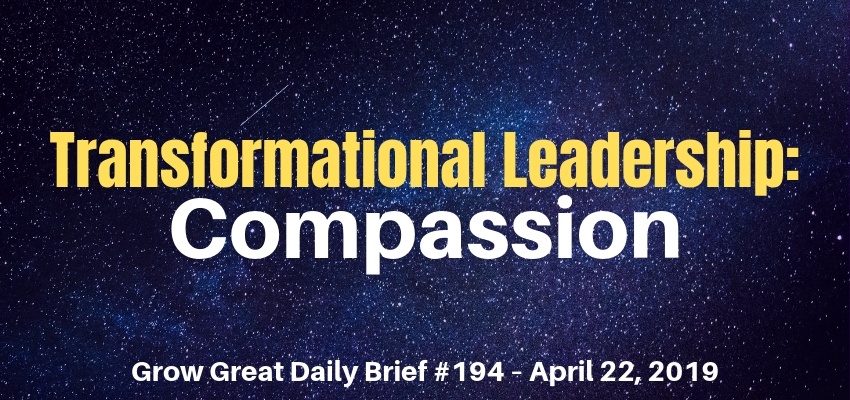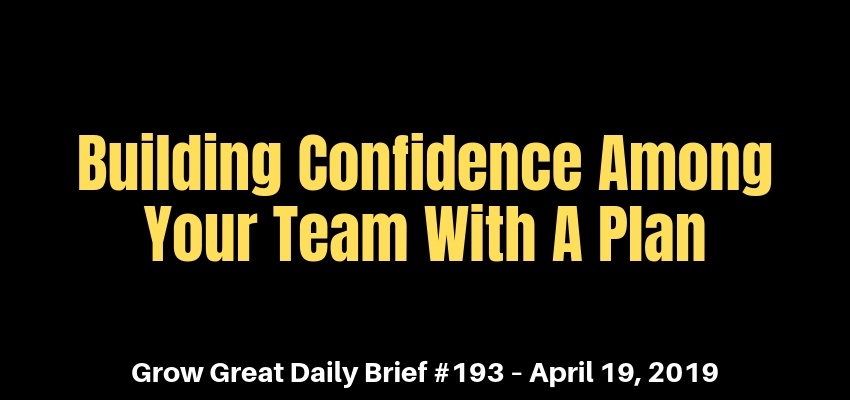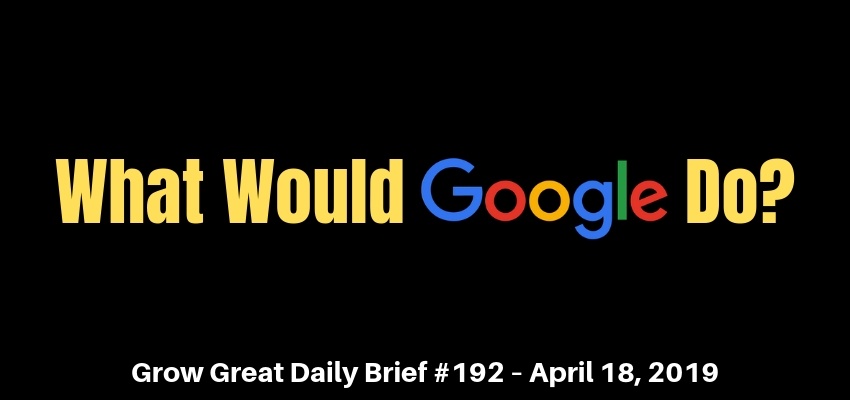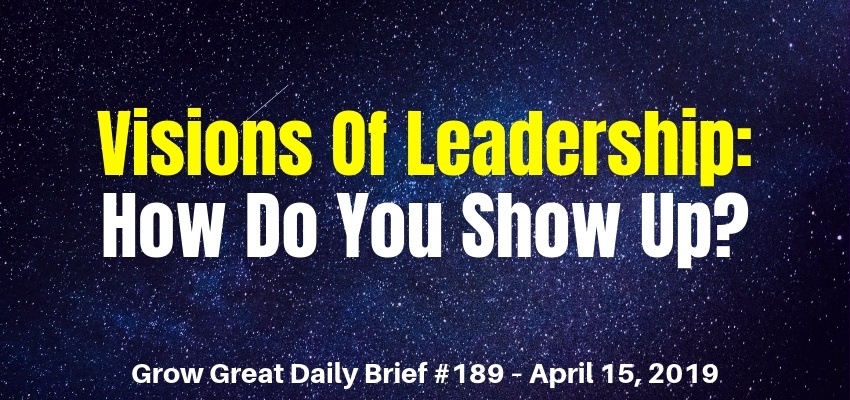Transformational Leadership: Compassion – Grow Great Daily Brief #194 – April 22, 2019
Podcast: Play in new window | Download (Duration: 8:19 — 10.7MB)
Subscribe: Apple Podcasts | Spotify | RSS | More
Five C’s comprise the work – and the progress – of transformational leadership. In this series, we’ll briefly go through these:
- Compassion
- Connection
- Communication
- Collaboration
- Culture
I put them in this order intentionally. We’ll explain as we go along this week. Today we begin with compassion.
Transformational leadership is defined by the Business Dictionary like this:
Style of leadership in which the leader identifies the needed change, creates a vision to guide the change through inspiration, and executes the change with the commitment of the members of the group.
Let’s personalize it a bit more though. We’re going to start with YOU and your leadership. Transformation begins with you, but that doesn’t mean you’re broken and need to be fixed. I tire of people who approach life – including leadership and business – from that viewpoint. I understand that some people are better at stuff than others. Some are more effective. Some are more impactful. Some more accomplished. But we all know there are plenty of ways to achieve success and find the results we’re chasing. There isn’t just one way. Study any handful of successful leaders you care to and you’ll likely see a variety of different styles and tactics. So before we dive into the first C, compassion, let’s focus a bit on self-awareness.
Who are you? What are you?
There are a variety of tools and assessments to help us. Some put the emphasis on our personality type. Others on our current strengths or talents. Still others on qualities and characteristics like values and beliefs. Many of these have their place as we dive more deeply into our lives to see ourselves more accurately.
I’m increasingly fascinated by looking at our value strengths. Namely, the beliefs and character strengths that drive our decisions and behaviors. Learning more about these helps us better understand our current default behaviors. These may change over time, too. They often do because we’re constantly learning, understanding and growing.
Self-awareness can be among the toughest work you’ll ever do. But it can also be the most profitable, too. I encourage you to spend the time to do this work because this podcast – and my work – takes aim at helping people live their best life. Yes, the focus is on business building and leadership, but those aren’t the only elements of your life. You’re a whole person. It’s important for you to commit to making all areas of your life shine.
Now, let’s talk about compassion, the foundation of it all.
The dictionary defines it as “sympathetic pity and concern for the sufferings or misfortunes of others.” That’s too narrow for our purposes. Let’s broaden it to a more practical meaning…
kindness, caring, and a willingness to help others
Leaders who commit themselves to growth in this area are poised for extraordinary transformation. Consider it extreme growth.
For your life and leadership to be truly transformational…you need this foundation. We all have room for improvement. I hope you’ve got a great start, but if you don’t – then make up your mind you’re going to change this.
It was in the early 1970s when I first heard the phrase, “servant leadership.” It seemed ridiculous to me at the time and I was just starting a career in sales as a high schooler. I thought it was redundant. Now that I’m an experienced, mature person…I know it’s redundant. Leadership that doesn’t focus on the welfare of others isn’t leadership. It’s tyranny, autocracy and colossally selfish. But that’s not YOU.
How can we grow our compassion? Simple. Not easy, but simple. Focus more on others and what you can do to help them.
Empathy is a necessary component. It’s the ability to understand and share the feelings of another person. Let’s lean heavily into that understanding part. This is a big step we can all make toward growing our compassion – working harder to understand others.
Pointedly, it means taking the time to fuel your curiosity instead of jumping to a conclusion or assumption without evidence. Think about the worst moment of your life. Did that moment properly characterize you, the whole you? Not likely. Now think about the best moment of your life. Did that moment properly characterize the whole you? No, of course not.
We’ve all had times like these where people misjudged us. Sometimes harshly. And without even a modest query. It’s easy to draw conclusions that may make us feel better, but we can get it wrong about the other person. No compassion. No understanding. Just judgment. A lack of understanding. A lack of empathy.
Start the habit of giving grace to people. This doesn’t mean you operate your life or your business without incorporating accountability. It means you work harder to understand who they are, how they feel and what really happened.
This is why I’m fanatical about evidence-based leadership. It’s just too easy for us to judge people and situations without really knowing the facts. The gap between what we know and what we don’t is most often filled with harsh judgment that is incorrect. But it can make us feel better about ourselves. Superior even.
Tap the brakes. Make inquiries. That means you actually ask questions and listen so you can better understand.
Then…deploy kindness.
Understanding without kindness isn’t compassion. My bias is that I’m a Christian. That whole “do unto others as you’d have them do unto you” means something. Walking in the shoes of the other person, however you choose to view it, can spark greater kindness. You’ll have to behave with higher intention and purpose. That’s going to be the hard part. To resist the knee-jerk conclusions and emotions long enough so you can behave more purposefully.
Transformational leadership doesn’t happen accidentally. So this process is a complete winner all the way around. You engage higher intentionality. You grow your ability and skills to seek better understanding. You reach more accurate conclusions. You behave with greater kindness to others. You grow as a leader. Your team members gain a much more effective leader.
There are no losers in this process!
Be well. Do good. Grow great!
RC
Transformational Leadership: Compassion – Grow Great Daily Brief #194 – April 22, 2019 Read More »



 Things have changed dramatically over the past 10 years at Google, but in 2009 Jeff Jarvis wrote a nice book entitled, “What Would Google Do?”
Things have changed dramatically over the past 10 years at Google, but in 2009 Jeff Jarvis wrote a nice book entitled, “What Would Google Do?”

